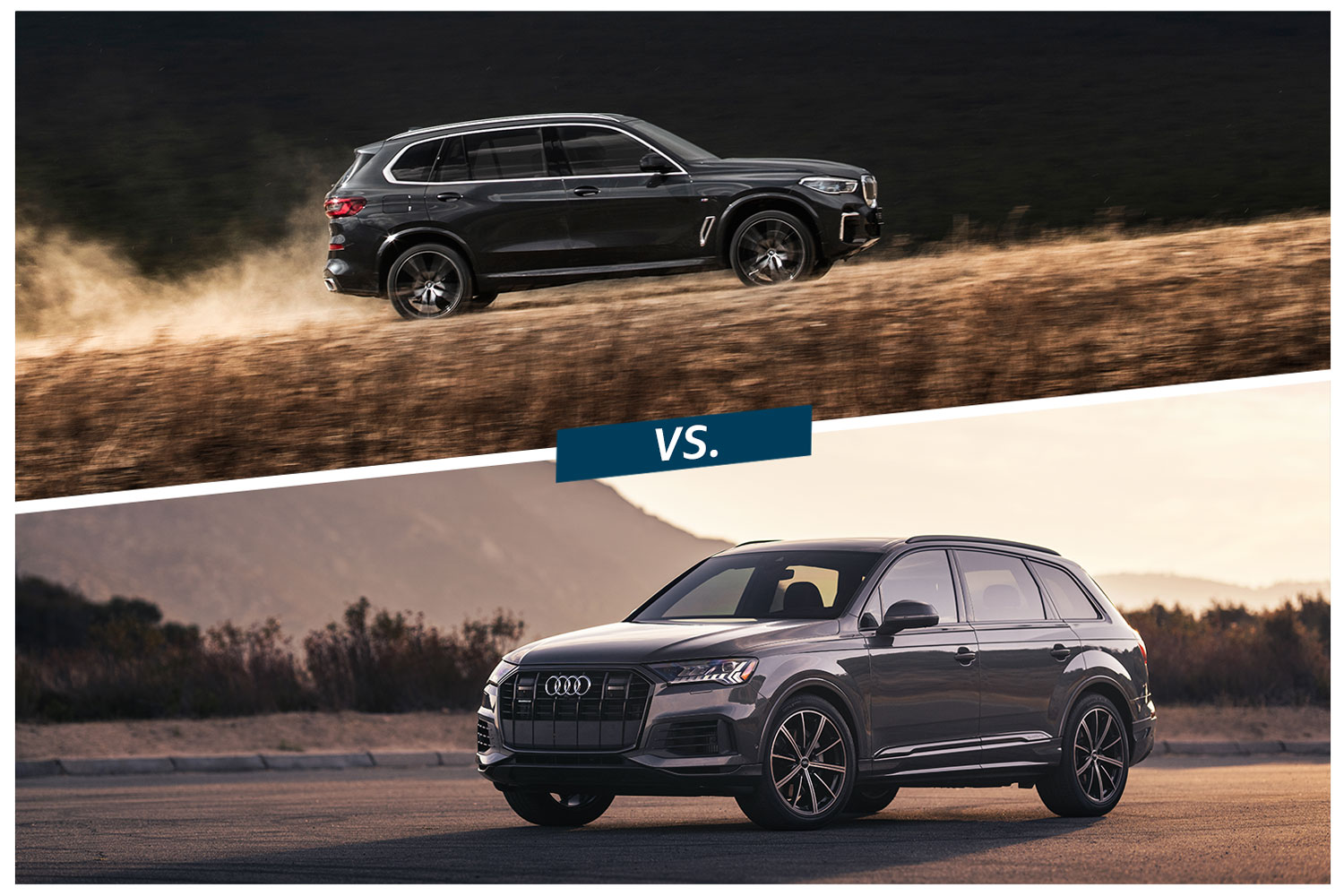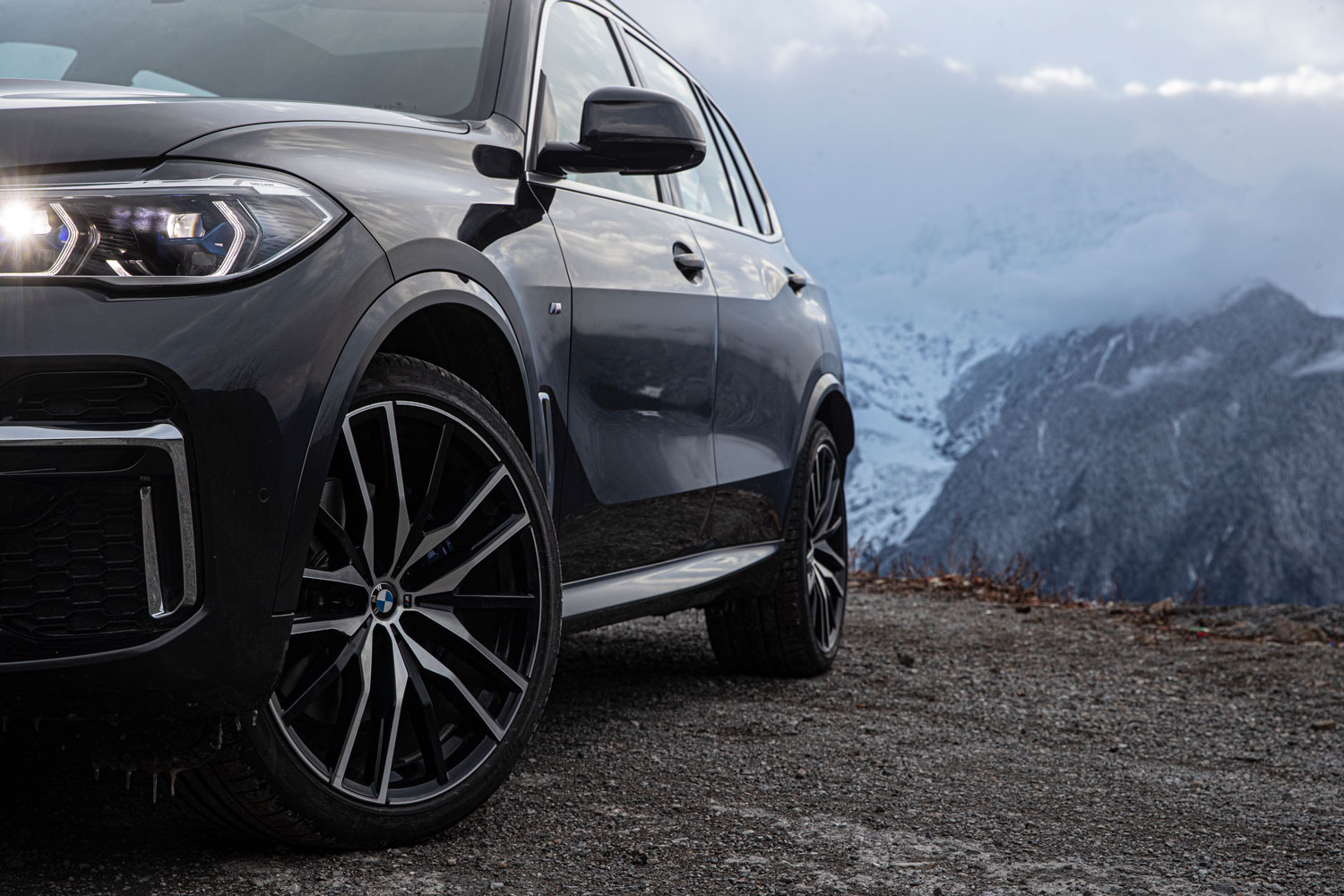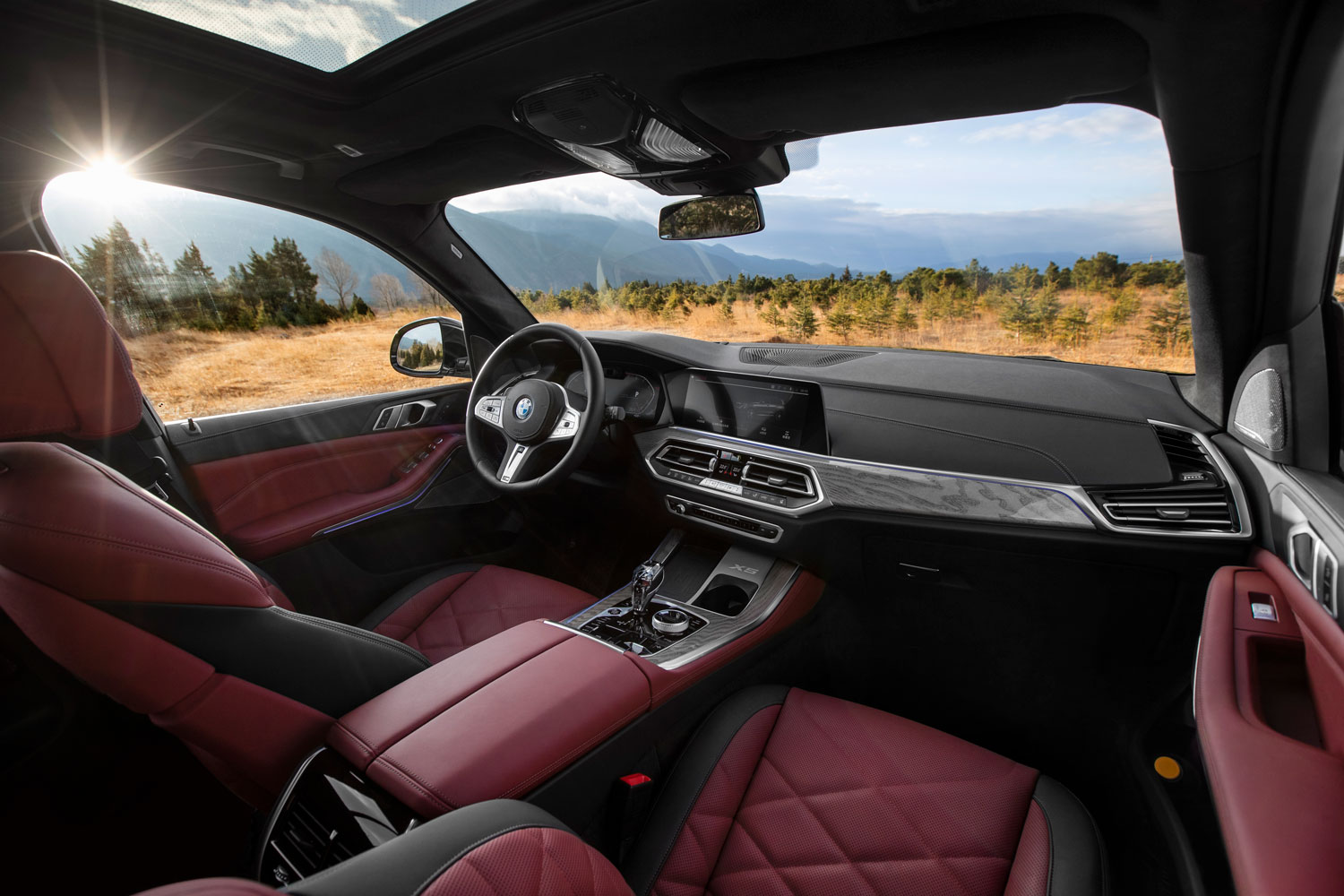Compared: 2023 BMW X5 vs. 2023 Audi Q7
These midsize, luxury SUVs serve up equal amounts of opulence and performance.
 BMW | Audi
BMW | Audi
QuickTakes:
The 2023 BMW X5 and 2023 Audi Q7 appear at first glance to have only small degrees of difference—they’re both midsize, luxury SUVs with loads of high-end appointments and high-powered engine options, after all.
But up close, the 2023 X5 distinguishes itself, offering more powertrain options (including an incredibly overpowered, 617-hp version of the X5 M), a plug-in hybrid setup, and more cargo room than the Q7. The Audi counters with greater passenger space and a distinctly elegant approach to luxury, though a 500-hp version called the SQ7 may split the performance difference for some shoppers. In general, though, the Audi speaks where the BMW shouts.
 BMW
BMW
2023 BMW X5 vs. 2023 Audi Q7: Price
The X5 starts with the sDrive40i at about $62,500, with BMW’s M TwinPower, 335-hp, turbocharged, 3.0L inline-six and rear-wheel drive (the all-wheel-drive xDrive40i commands a premium of more than $2,000). The M TwinPower turbocharged 4.4L V8 is found in the X5 M50i at around $86,500, and the X5 M at about $110,000, with 523 hp and 600 hp, respectively. The xDrive45e plug-in hybrid is available for about $66,500 with a turbocharged, 3.0L inline-six paired with an eDrive electric motor for a combined 389 hp.
The Q7’s more concise lineup features three trims: Premium, Premium Plus, and Prestige. The Premium costs about $59,000 to start, with a 261-hp, turbocharged, four-cylinder engine, and a 12-volt hybrid system. Premium Plus starts around $64,000 with the four-cylinder engine; a 335-hp, turbocharged V6 with a 48-volt hybrid system is available for nearly $6,000 more on Premium and about $5,000 more on Premium Plus. The V6 is standard on the top-line Prestige model, which starts around $75,000. At about $91,000, the SQ7 caps the lineup with its twin-turbocharged V8. Every Q7 trim comes with quattro all-wheel drive.
 BMW
BMW
2023 BMW X5 vs. 2023 Audi Q7: Features
For X5 models, the M Sport designation (around $3,000) adds 20-inch wheels, a head-up display, and an M steering wheel, among other features. The Premium Package, which costs about $1,300, includes wireless charging and remote engine start, while the Executive Package (ranging from about $2,700 to about $3,300) adds a panoramic LED sunroof and glass control surfaces to the Premium Package. The M50i’s $2,600 Dynamic Handling Package tightens the steering. The big one is the X5 M’s $9,300 Competition Package, boosting horsepower to 617, and adding an M Sport exhaust, unique interior surface options, and more.
All 2023 Q7 models have a $750 Towing Package, enabling a towing capacity of 4,400 lbs. on four-cylinder models and 7,700 lbs. with the V6 and above. The $2,000 Convenience Package gives Premium and Premium Plus trims wireless charging, a heated steering wheel, and a top-view camera system. Premium Plus has a Black Optic appearance package for $1,750, and Prestige loads up with the $1,500 All-Wheel Steering Package and the Luxury Package, which costs $6,850 and includes upgraded front seats, as well as unique, high-end interior materials. SQ7s start in Premium Plus configuration, though another $5,000 or so buys the Prestige trim with such niceties as a head-up display, soft-closing doors, and ventilated front seats. Unlike the BMW, there’s no track-tuned version of the SQ7, though.
 Audi
Audi
2023 BMW X5 vs. 2023 Audi Q7: Fuel Economy
Unsurprisingly, the V8-equipped X5 models suffer in efficiency: the X5 M and X5 M Competition rate at 15 mpg combined city and highway, while the M50i rates 18 mpg. The Q7 bests that in both four-cylinder trim (21 combined) and with the V6 (20 combined), while the SQ7 is estimated at 17 mpg combined
Interestingly the X5’s inline-six outpaces both Q7 engines, returning 23 mpg combined with rear-wheel drive and 23 mpg with all-wheel drive. The obvious economy play would seem to be the xDrive45e plug-in hybrid: While we’re yet to have mpg or MPGe figures from the Environmental Protection Agency, BMW claims the 45e has a 31-mile all-electric range and an overall range of 400 miles.
Written by humans.
Edited by humans.
 James Tate
James TateJames Tate has been writing about cars professionally for 15 years and he remains obsessed with them. He enjoys digging into the incredible technology of new vehicles as much as he likes the tactility and the driving experience of yesterday’s cars. He has written for a variety of legacy automotive magazines and websites.
Related articles
View more related articles